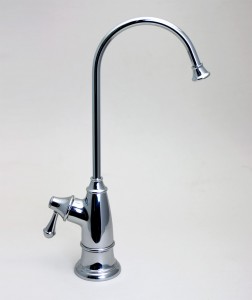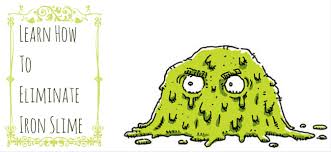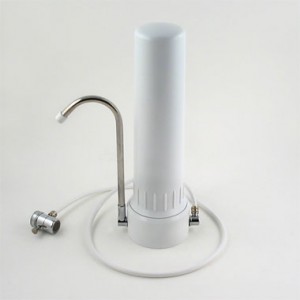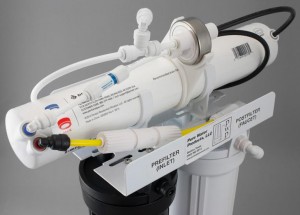
Just for a change of pace, this early September issue of the Occasional will be only about water treatment. If you don't find anything of interest, the next regular Occasional will be along soon. Here Pure Water Annie will trace the flow of water through a reverse osmosis unit, you'll read a really slimy article about iron bacteria, you'll hear about the nifty new Viqua VH420-F20 ultraviolet unit, learn the identify of the world's greatest $77 water filter, find out what causes water to form scale and how to avoid it, hear the virtues of twin water softeners, and, as always, there is much, much more.
To read this issue online, go here.
The Pure Water Occasional is sponsored and produced by Pure Water Products and the Pure Water Gazette. Please write if there are questions.
![pwanniemedium[1]](https://ymlp.com/https.php?id=www.purewatergazette.net/blog/wp-content/uploads/2012/05/pwanniemedium1-246x300.jpg) Pure Water Gazette Technical Wizard Pure Water Annie Explains How Water Moves Through An Undersink Reverse Osmosis Unit
Pure Water Gazette Technical Wizard Pure Water Annie Explains How Water Moves Through An Undersink Reverse Osmosis Unit
In modern home reverse osmosis units, tap water, driven by normal city water pressure, flows first through one or two prefilters which remove contaminants like sediment and chemicals, including chlorine and its by-products.
Next, the water enters the reverse osmosis membrane, a very tight, sheet-like filter, that allows water to pass but rejects dissolved solids like sodium and impurities like lead and arsenic. Some of the water entering the unit is used to cleanse the membrane surface. This water, called brine or concentrate, flows to the kitchen drain pipes.
The purified water leaving the membrane, which is called permeate, is stored in a small storage tank until it is needed. When the RO unit's sink-mounted faucet is opened, the purified water, or permeate, is forced by air pressure inside the storage tank through another carbon filter, which gives it a final polish, and out the faucet.
This is a simplified description of a three-stage RO unit. Additional stages like sediment filters and additional carbon filters or specialty filters can be included. The simplified description omits a few very essential parts like drain flow control devices, the shutoff system, and check valves.
Editor's Note: This excellent description of the common well water problem known as iron bacteria is reprinted here from the website of the Minnesota Department of Health. I've added a couple of pictures. --Hardly Waite.
Does this describe your water......red stains in the sinks?....swampy, oily, or other unpleasant tastes or smells?....red, slimy growths in the toilet tank? If so, your well or water system may have iron bacteria. Iron bacteria are small living organisms which naturally occur in soil, shallow groundwater, and surface waters. These nuisance bacteria combine iron (or manganese) and oxygen to form deposits of "rust," bacterial cells, and a slimy material that sticks the bacteria to well pipes, pumps, and plumbing fixtures. The bacteria are not known to cause disease, but can cause undesirable stains, tastes and odors; affect the amount of water the well will produce; and create conditions where other undesirable organisms may grow.
![]()
![]()
Clues which indicate that iron bacteria may be present in well water are:
TASTES AND ODORS - Iron bacteria often produce unpleasant tastes and odors commonly reported as: "swampy," "oily or petroleum," "cucumber," "sewage," "rotten vegetation," or "musty." The taste or odor may be more noticeable after the water has not been used for some time. Iron bacteria do not produce hydrogen sulfide, the "rotten egg" smell, but do create an environment where sulfur bacteria can grow and produce hydrogen sulfide.
COLOR - Iron bacteria will usually cause yellow, orange, red, or brown stains and colored water. It is also sometimes possible to see a rainbow colored, oil-like sheen on the water.
RED SLIMY DEPOSITS - Iron bacteria produce a sticky slime which is typically rusty in color, but may be yellow, brown, or grey. A "feathery," or filamentous growth may also be seen, particularly in standing water such as a toilet tank.
The characteristics listed above are typical of iron bacteria. However, objectionable stains, tastes, or odors may be due to other causes including iron, sulfate, hydrogen sulfide, manganese, or other nuisance organisms such as sulfur bacteria. Identification of substances in water is best done by having a laboratory test a water sample. Many laboratories provide iron bacteria tests for costs under $35. It is also a good idea to evaluate the sanitary quality of the well by doing two things: (1) testing the water for nitrate-nitrogen and coliform bacteria; and (2) assuring that the well is properly constructed, located, and maintained.
Iron bacteria are present in most soils in Minnesota. Iron bacteria can be introduced into a well or water system during drilling, repair, or service. Elimination of iron bacteria once a well is heavily infested can be extremely difficult. Normal treatment techniques may be only partly effective.
Good housekeeping practices can prevent iron bacteria from entering a well:

Treatment techniques which may be successful in removing or reducing iron bacteria include physical removal, pasteurization, and chemical treatment. Treatment of heavily infected wells may be difficult, expensive, and only partially successful.
Physical removal is typically done as a first step in heavily infected wells. The pumping equipment in the well must be removed and cleaned, which is usually a job for a well contractor or pump installer. The well casing is then scrubbed by use of brushes or other tools. Physical removal is usually followed by chemical treatment.
Pasteurization has been successfully used to control iron bacteria. Pasteurization involves a process of injecting steam or hot water into the well and maintaining a water temperature in the well of 60°C (140 degrees Fahrenheit) for 30 minutes. Pasteurization can be effective, however, the process may be expensive. Chemical treatment is the most commonly used iron bacteria treatment technique. The three groups of chemicals typically used include: surfactants; acids (and bases); and disinfectants, biocides, and oxidizing agents.
Surfactants are detergent-like chemicals such as phosphates. Surfactants are generally used in conjunction with other chemical treatment. It is important to use chlorine or another disinfectant if phosphates are used, since bacteria may use phosphates as a food source.
Acids have been used to treat iron bacteria because of their ability to dissolve iron deposits, destroy bacteria, and loosen bacterial slime. Acids are typically part of a series of treatments involving chlorine, and at times, bases. Extreme caution is required to use and properly dispose of these chemicals. Acid and chlorine should never be mixed together. Acid treatment should only be done by trained professionals.
Disinfectants are the most commonly used chemicals for treatment of iron bacteria, and the most common disinfectant is household laundry bleach, which contains chlorine.
Chlorine is relatively inexpensive and easy to use, but may have limited effectiveness and may require repeated treatments. Effective treatment requires sufficient chlorine strength and time in contact with the bacteria, and is often improved with agitation. Continuous
chlorine injection into the well has been used, but is not normally recommended because of concerns that the chlorine will conceal other bacterial contamination and cause corrosion and maintenance problems.
"Shock" chlorination is the process of introducing a strong chlorine solution into the well, usually at a concentration of 1000 parts per million or more. Ideally, the well should be pumped until clear, or physically cleaned before introducing chlorine. A brochure is available which explains how to add chlorine and determine the amount of chlorine to use. Otherwise, approximately 2 gallons of chlorine beach can be mixed with at least
10 gallons of water, and poured into the well. If possible, the chlorinated water should be circulated through the well and household plumbing by running the water back into the well through a clean hose, washing down the sides of the well casing. The chlorinated water should be drawn into the household plumbing and remain overnight, and if possible for 24 hours. Heavy infestations of iron bacteria may require repeated disinfections. Shock chlorination may only control, not eliminate, iron bacteria.
Before attempting to chlorinate, or doing any maintenance on a well, it is important to disconnect the electricity and understand how the well and water system works. It is usually advisable to hire a licensed pump installer or well contractor.
High concentrations of chlorine may affect water conditioning equipment, appliances such as dishwashers, and septic systems. You may want to check with the manufacturer of the appliances before chlorinating. The equipment can be bypassed, however, iron bacteria or other organisms may remain in the units and spread through the water system. It may be possible to disinfect the well with higher chlorine concentrations; and if the water storage and treatment units are not heavily infected, disinfect the treatment unit and piping with lower concentrations circulated through the water system.
After the chlorine has been in the well and plumbing overnight or for 24 hours, the water should be pumped out. If possible, water with high chlorine concentrations should not be disposed of in the septic system. It may be possible to discharge the water to a gravel area, run the water into a tank or barrel until the chlorine dissipates, or contract with a hauler to properly dispose of the water. Water from the well should not be consumed until the chlorine has been removed.
Source: Minnesota Department of Health.
Pure Water Gazette Fair Use Statement
We now stock the new Viqua 18-gallon-per-minute ultraviolet unit. It's an ideally sized UV system for all but the very largest residential users, treating a generous 18 gallons of water per minute for bacteria, cysts, and viruses at a strong 30 mJ/cm2 UV dosage.
The VH420 unit comes with its own 5 micron sediment pre-filter. The unit is conveniently mounted on a U-shaped rack that can be pointed in either direction to meet the installer's requirements. The VH420-F20 is the result of Viqua's many years of UV manufacturing experience.
The dosage rating for the powerful residential unit is
16mJ/cm2 @ 34 gallons per minute
30mJ/cm2 @ 18 gallons per minute
40mJ/cm2 @ 14 gallons per minute.
This means that even at 34 gallons per minute the UV dosage is as powerful as the advertised dosage of many popular UV systems on the market.
The unit's 5 micron sediment filter is mounted in the Viqua easy-service housing (see picture below) that accepts all standard radial flow 4.5" X 20" cartridges. See full details on the filter housing here. The lamp is equally easy to service. Lamp change can be done without turning off the service water.
Viqua is the manufacturer of both the prestigious Sterilight and Trojan lines of ultraviolet equipment. We are factory-direct Viqua vendors and can supply any Sterilight, Trojan, or Viqua branded items.
Please call for information on the Viqua 420-F20: 940 382 3814.
"The world's greatest $77 water filter," after all these years, still costs just $77.
Pure Water Products' classy Model 77 countertop filter is now almost 30 years old. And the amazing thing is that its original 1987 price, $77 with shipping to US addresses free, has never changed.
Among the unique properties of the product is its lifetime guarantee, which covers all parts except the replaceable filter cartridges.
Pure Water Products first made Model 77 in 1987, the company's second year in operation, as a low-cost alternative to aggressively marketed stainless steel and silver/carbon countertops that were popular at the time.
We credit the product's success to its simplicity. It attaches easily to most faucets and it's easy to move. It requires no professional installation. Installation usually takes a couple of minutes, as does the annual cartridge change.
Although it's simple, it is quite effective and versatile. The standard unit accepts any 9.75" X 2.5" filter cartridge (by far the most common size made), so it can be applied to a variety of water treatment situations. The standard cartridge is a chlorine-hungry MatriKX carbon block.
The alternative "candle" style slimline Model 77 accepts Doulton ceramic candles as well as a screw-in carbon block.

For more information about Model 77.
For information about the double version of Model 77.
Scale is a serious problem caused by the deposit of hardness minerals (mainly calcium and magnesium). Hardness can block piping systems, causing the loss of water pressure due to reduced pipe diameter, and it can greatly reduce the effectiveness of home heating systems and hot water heaters. Scaled pipes and appliances waste energy and money.
Scaling is caused by hardness of water. Hardness is defined, in simple terms, as the amount of calcium and magnesium present in the water. Hardness is measured either in parts per million or as grains per gallon. Water treatment professionals most often use grains per gallon. The conversion is easy: a “grain” is equal to about 17.1 parts per million.
Although there is no absolute standard, water is usually considered hard enough to cause problems at about 4 grains per gallon, and it is considered hard enough to require treatment at 7 grains per gallon and up. There is no upper limit on hardness, but water of 100 grains per gallon is rare.
The standard residential treatment for hard water is the conventional water softener, which exchanges sodium ions for the hard water minerals, calcium and magnesium. Conventional softeners are proven, reliable tools. They use salt in the softening process. In recent years a number of electronic and non-electronic softener substitutes have come on the market. Some of these are more effective than others. Template Assisted Crystallization (called TAC) is now the most widely used of the alternative scale preventives. TAC units not only prevent scale buildup but they remove existing scale as well.
Badly scaled water heater element after only 40 days service on 26 grain hard well water. (Click picture for larger image.)
More information:
Pentair's new membrane promises 50% recovery.
We're testing Pentair's new residential reverse osmosis membrane, the GRO encapsulated, that boasts a 50% recovery rate. What 50% recovery means in simple terms is that if you put a gallon of water in, you get half a gallon of finished RO water out. This is way more efficient than standard residential membrane performance.
Reverse osmosis membranes require rinse water to flush away impurities and keep them clean. Very large membranes that operate under higher pressure are much more efficient in terms of recovery than small domestic membranes. Small membranes are normally set up so that several times the amount of water that is produced for drinking, the "permeate," is required for "brine" or "concentrate," the water that goes down the drain. A setup of three or four parts brine to one permeate is not uncommon. Usually, as the gallon-per-day size of the membrane gets larger, the ratio gets better.
Here is the setup ratio that we use in building small RO units. (For the sake of easy comparison, I'm converting the brine numbers to gallons per day, although flow restrictor manufacturers usually express their output in milliliters per minute.)
| Gallon Per Day Rating of Membrane | Gallon Per Day Flow-to-Drain Allowed by the Flow Restrictor | Approximate Recovery |
| 25 | 95 | 21% |
| 36 | 135 | 21% |
| 50 | 160 | 23% |
| 75 | 210 | 26% |
So, the theoretical permeate production of an RO unit with a 50-gallon membrane would be 50 gallons of water in a 24-hour day if it were allowed to run continually; during the same time, it would run 160 gallons of water to drain. It would consume at total of 210 gallons (permeate plus brine) and "recover" 23% of this as 50 gallons of permeate. (If this seems like horrible water consumption to you, keep in mind that the RO unit does not run 24 hours per day. It only runs while it is filling the storage tank. Most of the time, it's shut off. Also keep in mind that it takes a gallon of water to grow a single almond.)
With Pentair's new membrane, the 50 gallon-per-day unit would be paired with a 57 gallon-per-day restrictor (150 milliliters per minute). It would make 50 gallons of permeate in a day from 107 gallons of tap water entering the unit. That's a very impressive 47% recovery.
What we want to find out is how durable the membrane is and if it will really stand up to long use with what is theoretically not enough brine flow to keep a small membrane healthy. So far, so good. After a few weeks the TDS rejection is good and the unit is running normally. The next step will be to test it with a permeate pump, to see if it's brine production is enough to power the pump.
Don't expect to see this product soon. We don't like being first, and we won't incorporate it into our RO offerings until we're sure it works.
 Our basic Black and White RO unit with Pentair's encapsultated GRO 50% recovery membrane. (Click picture for a larger view.)
Our basic Black and White RO unit with Pentair's encapsultated GRO 50% recovery membrane. (Click picture for a larger view.)
One of the most underrated "green" products available is the twin tank water softener. Although the initial cost is more, twin softeners can pay for themselves in water and salt savings. They also offer the satisfaction of being the most environmentally friendly of conventional water softeners.
A twin softener is essentially two identically-sized water softener resin tanks joined and controlled by a single softener valve. The control valve can be either a timer or a metered regeneration style, with metered being strongly preferred for this type softener.
To dispel a common misconception about twin softening units, the two tanks work one at a time. That is, you don't get double softening. A single softener tank is more than adequate to reduce the hardness of most residential water to virtual zero. The twin unit operates by keeping one of its tanks in reserve. When the capacity of tank one is reached, the control valve immediately puts tank two into service, so that there can never be a time when hard water is being sent to the home, as can happen with single tank softeners. Even when a tank is being regenerated, soft water is being delivered to the home. And, unlike the single tank unit, twin units use soft water for regeneration.
Since the switch from one tank to the other can be made at any time of the day or night, no "reserve" needs to be programmed into the softener. With conventional one-tank units, a certain amount of the tank's capacity--usually about one day's expected usage--is always held in reserve. This is accomplished by simply programming the softener to regenerate a day early. By conservative estimate, this "reserve" requirement is responsible for about 15% of the salt and water used by a single-tank softener. Simple arithmetic tells you that if a softener that regenerates once a week always regenerates one day early, in a year it will simply throw away 48 days worth of its softening capacity. And what is really being tossed away is water and salt.![]()
Applications
Twin tank units are especially good for applications that require a long, uninterrupted supply of soft water. For example, if a softener is used to pretreat hard water for a large reverse osmosis unit, it is difficult to assure that the reverse osmosis unit will not demand water when the softener is regenerating. A twin tank unit solves this problem by providing a never ending supply of soft water.
One of our local customers is a yogurt store that needs to protect its expensive yogurt machines from scaling. Yogurt machines run around the clock and it would be very impractical to turn them off so that a conventional water softener can regenerate its resin bed. A twin softener is a perfect solution. It provides an endless supply of treated water with fully automatic operation with no need to maintain a "reserve."
Twin softeners are the most water and salt efficient softeners made. They regenerate less frequently because no "reserve" capacity has to be calculated. They have the added advantage of performing the regeneration with softened water, assuring a cleaner and more complete regeneration. Twin softeners are especially useful for applications requiring long service cycles that need an uninterrupted supply of soft water.
Although we don't have twin softeners on our website, we have a full line of both Fleck 9100 and Fleck 9000 twin softening units. Please write or call for details.
Please visit our RO Parts Page for tanks and accessories. We also have dedicated parts pages for countertop water filters, undersink filters, and aeration equipment. We stock parts for everything we sell.
Places to Visit on Our Websites in the meantime.
Garden Hose Filters. Don’t be the last on your block to own one.
Model 77: “The World’s Greatest $77 Water Filter”
”Sprite Shower Filters: You’ll Sing Better!”
An Alphabetical Index to Water Treatment Products
Our famous whole house Chloramine Catcher
Pure Water Occasional Archive: Sept. 2009-April 2013.
Pure Water Occasional Archive: April 2013 to present.
Write to the Gazette or the Occasional: pwp@purewaterproducts.com
Please Visit
The Pure Water Gazette – now now with an up-to-the-minute feed of the latest water news.
| | Powered by YMLP.com | |
| | ||